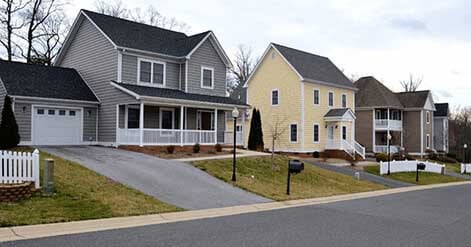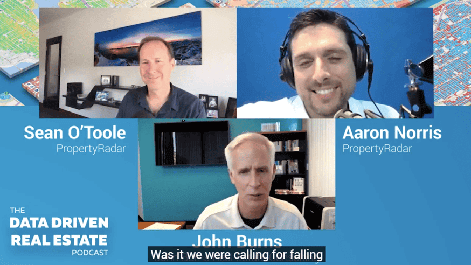How to Accurately Determine Property Value Using Data

I’m a firm believer in the notion that a property is only worth what someone will pay. Until a buyer steps up, gets financing, and you have a check in your hand, even the most experienced appraiser can only make an educated guess as to the value of your property. That's as good as it gets.
When I made the decision to exit the real estate market and sell my remaining properties in 2006 (with the exception of my personal residence which has been brutal to watch drop in value), I took into account a number of factors that often go overlooked which I have listed below. The caveat here is that each factor by itself will never render a complete picture of the marketplace. If you seek to discover the bottom of your local market and want to determine the actual value given of your property you must use all these sources in tandem with each other.
Listings – Active, pending or sold data remain one of the most valuable sources for determining value. Granted, the best and most timely access to this data is only available to real estate agents through their MLS (Multiple Listing Service), which provides a great deal of detail about the original asking price, final sales price, home features, days on market and other details that are critical to take into consideration when trying to determine value. The MLS also typically offers sales data weeks before it is reported by public record “sales comps” providers. If you are not a Realtor(R), be sure you work with one that has access to this important resource.
Foreclosures – Many believe foreclosures are responsible for driving prices down. False. The reason prices have dropped so dramatically is affordability – plain and simple. In fact, it's the price declines that are driving foreclosures due to negative equity which is the number one cause of foreclosure. That said, areas with high foreclosures will correct quicker to affordable levels as banks are more willing to sell at prices buyers can afford – especially when their losses are covered by taxpayers. By monitoring preforeclosure, auction and bank-owned properties you can get an amazing 6 to 9 month preview of what lies ahead in your market.
Home Builders – While more homebuilders are listing their inventory in the MLS, you can’t get a real feeling for new home prices, and current incentives without visiting the builder’s sales office. I learned this lesson the hard way when a buyer canceled an escrow because they could buy a new home around the corner for $30,000 less then the price we agreed on. To get ahead of the builders price reductions and get my property sold I ultimately had to drop the price by $50,000 turning what I thought would be a tidy profit into a very real loss.
For Sale By Owner (FSBO) – Agents often dismiss FSBO’s as they tend to be poorly marketed and rarely close. Nevertheless, access to FSBO’s has become easier and it only takes one aggressively priced FSBO near your subject property to impact your ability to sell regardless of whether or not that price is really a fair comparison.
Area Rents – It is really important to understand that people buy homes based on payment, not price. And it is only reasonable they compare that payment to area rents. Most people will pay a premium to own versus renting, but that premium has its limits, especially in a market where it is unclear the difference can be made up for with appreciation. You can get a feeling for value by using the gross rent multiplier (GRM) formula, which simply compares annual gross rents to value, or by using the more sophisticated Capitalization Rate (Cap Rate) approach. Both formulas look at the likely return on investment from buying the property as a rental. Take for example a property that rents for $1500 month and has $5000 a year in expenses. At an 8 percent return on investment (Cap Rate) the property is worth $162,500, which is equivalent to a GRM of 9 (GRM = value/annual gross rent). In my home town for example property values reached an unsustainable 1.5% return on investment versus rents – homebuyers were clearly better off putting their money in a bank at that point, and the only way prices could climb further was rising rents, or a willingness to accept even worst returns.
Area Incomes / Affordability – I’ve saved the most important for last. This simple concept details the rapid rise in prices from 2000 to 2008, along with their subsequent fall. As I stated above, people buy homes based on payment, not on price. The payment a person can afford is simply a function of the amount of income they make, and other expenses they may have. While there is some debate on how much house payment is affordable, most agree that it should not exceed roughly 1/3 of the borrowers income. To determine price you can then simply look at typical area incomes, and apply current lending practices. As interest rates drop, buyers can pay more in price on a given income. As lenders began offering interest-only payments, and then pay-option teaser rate payments, prices climbed further as buyers were lulled into a false belief they could afford the payments. When those lending programs were removed from the market in August of 2007, we saw the rapid decline of prices as they adjusted to the change in loan terms. To get an idea of the real value of properties in your area, you have to take area incomes and current loan programs into account… buyers can only pay prices they can afford.
Resources:
Online – If you are an agent multiple listing services are universally available online and remain a primary resource. PropertyRadar’s ForeclosureComp report provides an easy-to-understand preview of every possible REO listing for the next 6 to 9 months, as well as up-to-the-minute details on lender discounts at auction. Craigstlist.com is an excellent source of both rental data and For Sale By Owner listings. For incomes see the Census Bureau.
On the Street – I can’t emphasize enough how important it is to get out of your office and survey the area around the property you are trying to value. Above I mentioned a property I misvalued given the prices offered by a local builder. Had I driven around that area I would have seen the sign – “New Homes from the high $200’s.” Imagine a big FSBO sign a few doors down with a low price. And it isn’t just these things that effect value – it can be the two pit bulls next door that bark incessantly while you visit the property. If you don’t take the time to understand the area, and the current activity there, you are putting yourself at significant risk.I hope this introduction to how I determine property values has been helpful. If you have additional ideas or tips please contribute and comment below.


